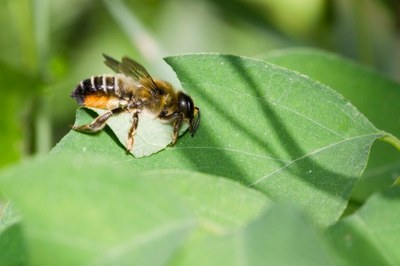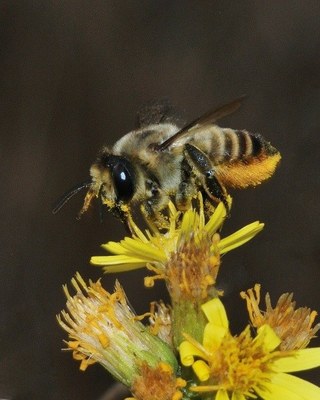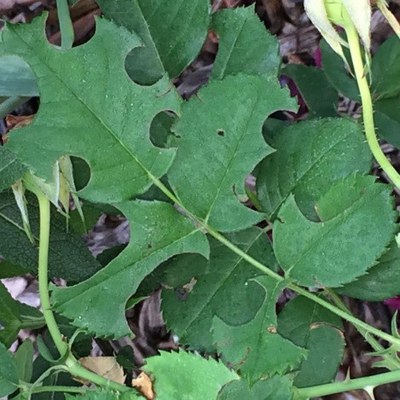Leaf Cutter Bees

Surely by this time of year, you have seen the mysterious circular- or oval-shaped holes in the leaves of plants in your yard. These are formed by our friends, the common leafcutter bees. They are solitary bees in the large genus Megachile, in which there are almost 1,500 individual species.

Leafcutter bees are smaller than honeybees. They don’t collect pollen on their legs like honeybees or bumblebees – they use hairs on their abdomen; if you see them, you might notice the bright yellow color of their tummies. I find the leaf holes now in summer but I’ve never managed to actually see the bees on flowers until fall. Leafcutter bees are super-productive pollinators. In greenhouse or netted experiments, USDA-ARS has shown that that 1 alfalfa leafcutter bee can do the job of 20 honey bees.
The bees nest in soft, rotting wood or in pithy stems like those of roses or elderberries– they will not damage your house. In spring, you could even set out elderberry or lily prunings for them to use as nests. They use those little leaf pieces to make individual cells for each egg in the nest. Leafcutter bees will use many kinds of leaves but prefer soft, smooth leaves such as those from: rose, green ash, lilac, and Virginia creeper.

The leaf injury is usually just a curiosity. However, if you happen to live in a rural area with few leaf choices and abundant leafcutter bees, they could remove a lot of leaf tissue and hurt certain plants. Insecticides WON’T help since the bee is not eating the leaf; you will have to protect the plant with netting. It almost makes it tempting to leave more of those ash seedlings growing around the flower beds, doesn’t it?
Photo by K. Wiederholt, CREC.
References:
http://www.ext.colostate.edu/pubs/insect/05576.html
https://en.wikipedia.org/wiki/Megachile
http://www.ars.usda.gov/is/pr/1997/970820.htm
Kathy Wiederholt
Fruit Project Manager


